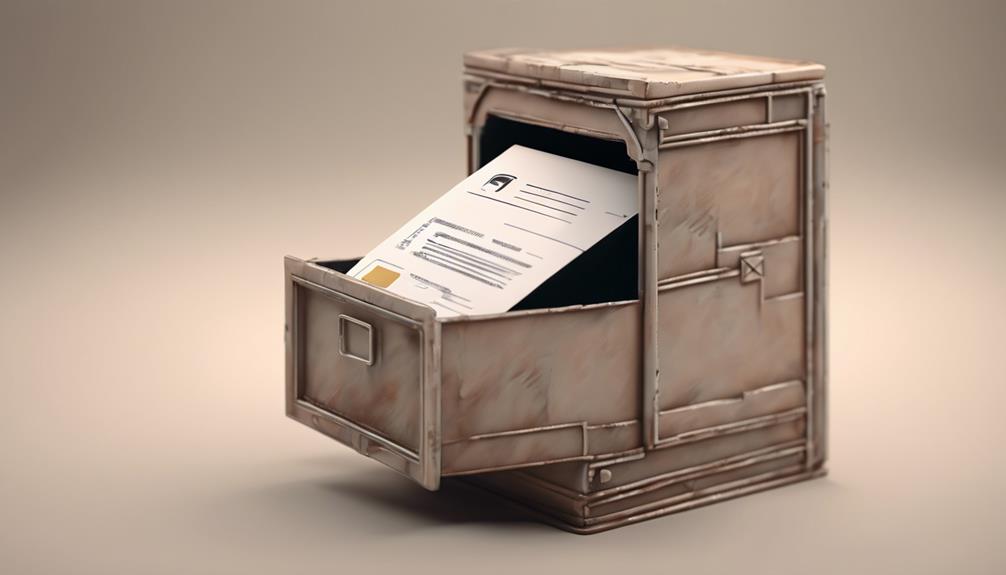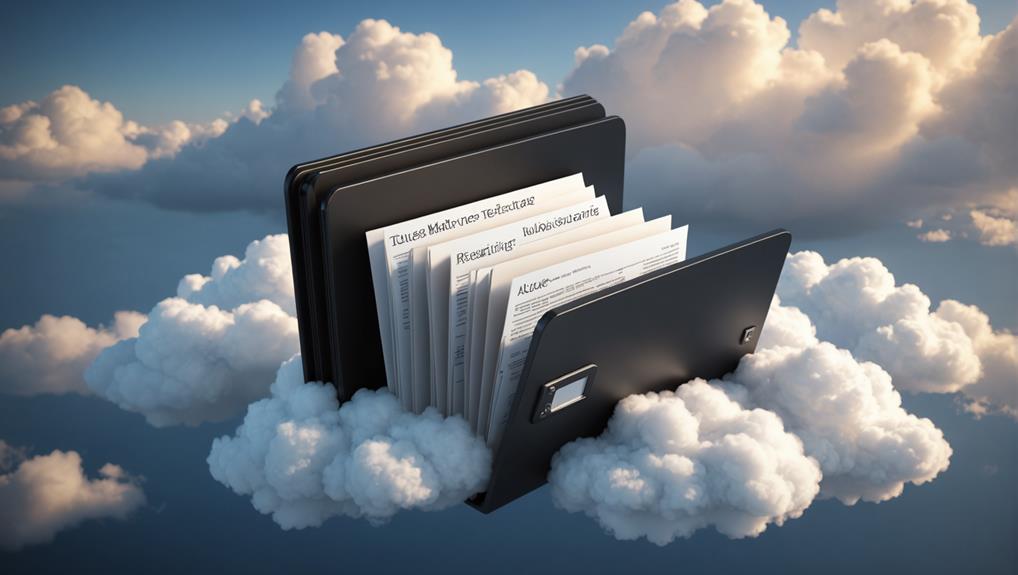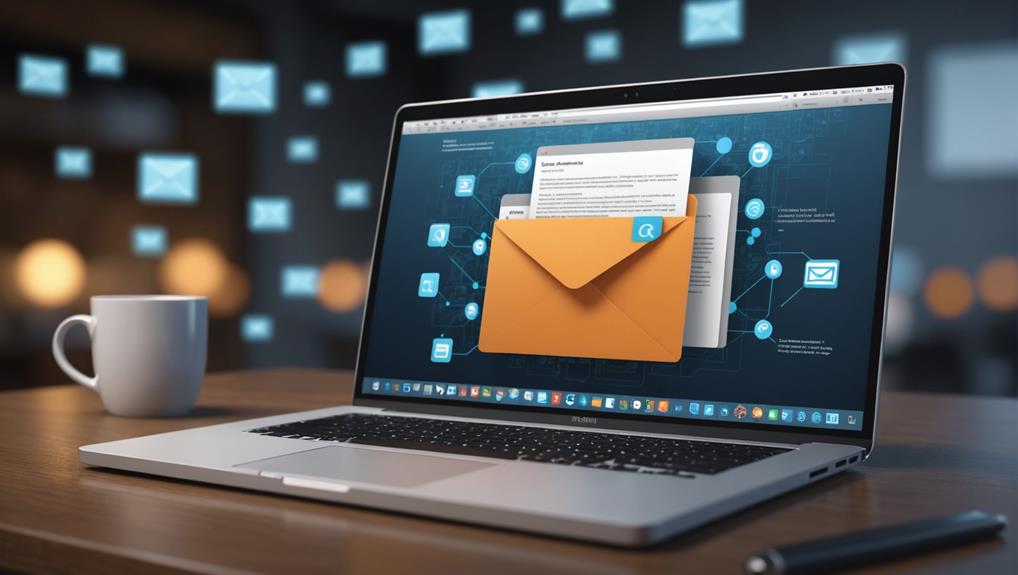
When you archive a message, you're essentially moving it from your main inbox to a special folder or section where it's safely stored away. This helps clear up space without deleting the message, allowing you to focus on emails that need immediate attention while keeping the archived ones accessible for future reference. These messages are protected on secure servers and can be retrieved easily whenever you need them, be it through a simple search by the sender's name or a keyword. You'll also find that archiving can free up mental space and declutter your digital environment, enabling you to maintain important connections effortlessly. There's more to explore on how this simple tool can enhance your email efficiency.
Understanding the Archive Function

While archiving messages might seem straightforward, it's crucial to grasp how this function helps manage your digital communication effectively. You're not just stashing away old messages; you're organizing your life, ensuring that every interaction you value doesn't get lost in the chaos of daily emails and texts.
Think of the archive function as your personal assistant. It helps you declutter your inbox without losing touch with the conversations that matter. This way, you can focus on the messages that require immediate attention, while knowing that everything else is safe and retrievable whenever you need it. It's like putting your memories in a safe, knowing you can revisit them anytime.
Moreover, using the archive function lets you maintain connections without feeling overwhelmed. It acknowledges that while not every message needs to be front and center, none should be forgotten. This subtle management tool supports you in staying engaged with your community, ensuring no one feels ignored. It's about keeping your digital space tidy and your relationships intact, making sure you're always part of the circle, aware and responsive, but never burdened by too much noise.
How Archived Messages Are Stored
Archived messages are securely stored in a digital format, ensuring you can easily retrieve them when needed. This method uses advanced technology to create a space where your communications aren't just saved but are also protected. Imagine it as a personal vault, where every message you've decided to archive goes into a secure spot that's just for you.
When you choose to archive a message, it's immediately transferred to a server. This server is specifically designed to handle large amounts of data while maintaining high security standards. It's like having a dedicated librarian who not only stores your books safely but also makes sure they're in perfect condition when you need them again.
These servers are often located in multiple locations around the world, which ensures that your data is safe, no matter what happens in one location. This redundancy also means that you're part of a global community of users who value privacy and security just as much as you do.
Accessing Your Archived Messages

Now that you understand how your messages are stored, let's explore how you can retrieve them from the archive. It's like pulling your favorite book off a high shelf; you know it's there for you whenever you need it.
First off, accessing your archived messages is straightforward. If you're using a smartphone, open your messaging app and look for the "Archived" folder, often found in the menu or settings. On a desktop, it's similar. Open your email client or messaging platform, and there should be an option labeled “Archived” or “More” where archived messages are stored.
Clicking on this section will reveal all the conversations you've tucked away. They're safe, uncluttered from your main inbox, but always part of the conversation. You can search by sender's name or keywords if you're looking for something specific.
Once you find the message, you can read it, reply to it, or move it back to your main inbox—it's totally up to you. It's comforting to know your messages aren't gone; they're just in a special spot, waiting for you to reconnect whenever you're ready. This way, you're always part of the loop, never out of touch.
Archive Vs. Delete: Key Differences
Understanding the key differences between archiving and deleting messages can help you manage your digital communication more effectively. When you archive a message, you're essentially tucking it away for potential future use. It's still there, just out of your immediate view, giving you a cleaner inbox without permanently losing any content. This way, you can always go back and retrieve those messages whenever you need them, ensuring that you don't miss out on anything important.
On the other hand, when you delete a message, it's like saying goodbye forever. Deleted messages are removed from your inbox and eventually from the server after a certain period. This action is definitive, freeing up space but at the cost of potentially losing valuable information permanently. It's a good option for messages you're certain you won't need again.
Both options reflect different needs: archiving is about postponing decisions without losing touch, while deleting is about making definitive decisions to declutter your digital world. By understanding these differences, you'll feel more connected and in control of how you interact with your digital space, aligning your choices with your personal or professional life's rhythm.
Benefits of Using the Archive Feature

Using the archive feature allows you to keep your inbox clean while ensuring that important messages remain accessible. It's like having a secret room where all your valuables are safe but just a step away when you need them. This means you can keep your primary space tidy without losing anything dear to you.
When you archive, you're not just organizing; you're fostering an environment where every email has its place. It's like being part of a community where everyone knows where they belong. You'll find yourself more productive and less overwhelmed by the clutter. It's about creating a space that feels welcoming every time you log in.
Moreover, archiving keeps important conversations at your fingertips, away from the chaos of daily incoming messages. You can revisit them without sifting through piles of less relevant emails. It's reassuring, knowing that you're not discarding memories or opportunities; you're simply placing them where they can be respectfully revisited.
Archiving is more than a feature; it's a way of respecting your digital space and the messages that have shaped your communications. By choosing to archive, you embrace the peace of mind that comes with knowing nothing important is lost, just thoughtfully stored away.
Conclusion
Now that you're familiar with archiving messages, you can see it's a handy way to keep your inbox tidy without losing important emails. By archiving, you stow messages safely away, yet they remain easily accessible when needed. Unlike deleting, you don't risk losing valuable info. So, next time your inbox is overflowing, remember to archive instead of delete. It's a smart move to manage your messages better and keep everything you might need later on.






